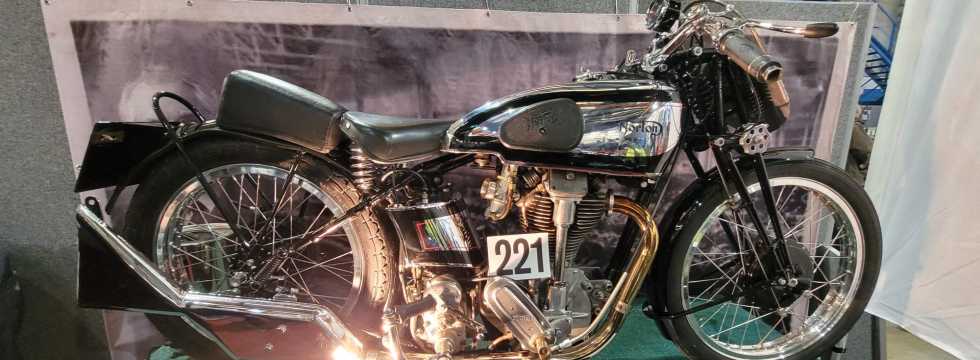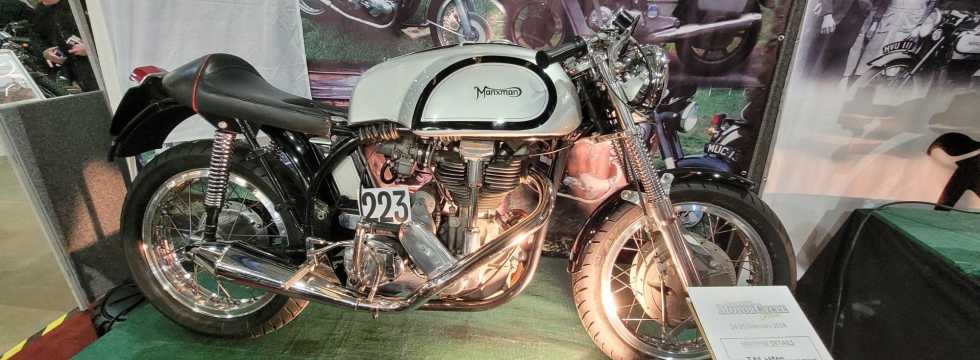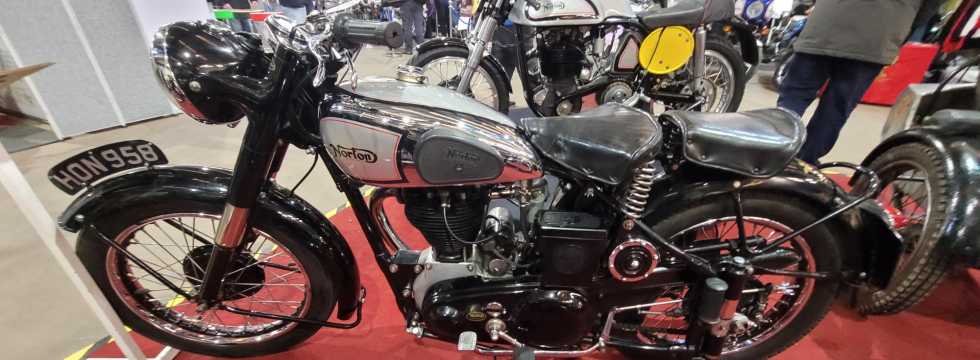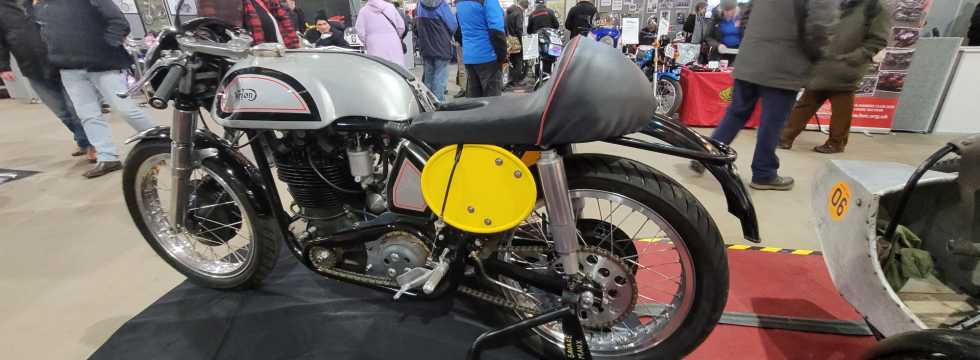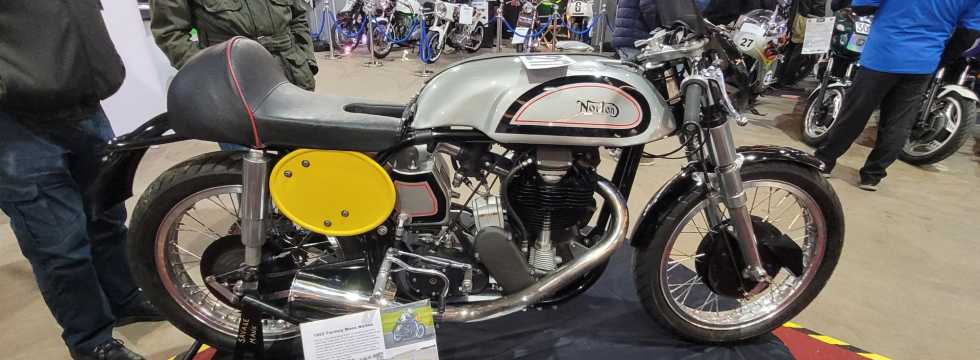A review of correspondence from NOC-L
The oil pump fitted to Norton twins wears and allows oil to drain into the crankcase when the machine is left standing - the phenomenon known as wet sumping. It can be ground down and restored to something like its original efficiency.
Why grind down the oil pump body?
Fifteen years ago I had my oil pump redone by Nortech Engineering in Vail, Arizona, USA, but they are now long gone. They claimed to have perfected an anti-wet-sumping design, installing internal oil seals. I tried to have a look inside the pump two or three years ago (when I decided to blame the problem on those Frenchy filters from Crosland), but they put that bugger together so tight I could not budge the screws at all.
| I have a couple of extra oil pumps, so I thought I might freshen one up by following the official Norton instructions for doing so. Why does Norton suggest removing material form the pump body to tighten clearances? To wit: "... the pinions wear into the pump end covers and such wear can only be removed by taking off the covers and flattening down the actual pump body." |
Well; the pinions do wear into the end covers, so why isn't the best rectification simply to flatten the covers back down to the form they must have had before any wear occurred?
Ben English (319nline@wizvax.net) on NOC-L 23rd. Jun 1999
A reason for grinding down the pump body
I assume this is because the 'manufactured perfection' of the pump body is a two-chambered structure, with the feed and scavenge gears working in separate compartments and divided by a wall that's part of the main casting. The gears will certainly wear the covers and it would be good to flatten these (which the Norton manual doesn't mention).
However, the gears will also wear somewhat against the common back wall of their pump chambers, so even if you flatten the cover there would still be some play in the gears. Therefore, taking metal off the pump body until you feel friction is the only way to get rid of all the play, but if you flatten the pump covers first, you'll have to take less off the body.
Mike Taglieri (miket_nyc@juno.com) on NOC-L 23rd. Jun 1999
The pump body is the part that should be ground down
Rubbing down the pump body is the only sustainable way to go. Rubbing down the end plate:-
(1) does nothing about wear in the body
(2) eventually leaves nothing for the screws to thread into
Andy Dunn (andy@dunns.demon.co.uk) on NOC-L 23rd. Jun 1999
Crankshaft oil seal may be an additional problem
Fifteen years is a long time for an oil pump. Maybe one of these oil seal mods has finally thrown the towel in and is the cause of the wet sumping. If metal were machined out from between the supply and return pinions to allow 'O' rings to be fitted on the shafts, the 'O' rings may have failed and been eaten up by the motor or just worn to the extent that oil might be being scavenged from the sump and fed across into the feed side of the pump and back through the motor again.
The balance of pumping, scavenging and leaking could be tipped in favour of more and more oil building up in the sump than is being pumped back to tank. The extra restrictions of the oil filters would only help this.
I've repaired several pumps by facing off the outer cover on a sheet of emery paper or wet & dry (or whatever you call it in the US) over a sheet of glass. Usually the body shows minimal wear. I do have a pump that has deep marks in the body on the face behind the pinions. I will try and machine them out, but will have to take corresponding cuts from the outside ends of the body as the pinions will be deeper. As you know it's the clearance between pinions and body/end plate that is important. At a price of $642.90 Australian, they are worth trying to repair.
One of the other guys in our club had a problem similar to yours. We went in to look at the oil pump, but what we found was the oil seal on the end of the crankshaft had failed. It was still retained in the cover, but the lip had blown inside out. There must have been adequate oil getting to the relevant moving bits as the motor did not seize or blow up.
What was happening was that some of the oil was leaking past the seal and going straight into the sump at a greater rate than it normally would. We replaced both the crankshaft end seal and the 'O' ring between pump and cover, and there was no more problem. When we had a closer look at the seal, it was a plain type that had no spring behind the lip. It was a puzzle at first because we were a long way from home and the bike was running alright. However it would blow smoke and one moment the oil tank was full, then it was low. We thought it was using oil, so naturally we refilled the tank. It was really hiding oil in the sump. Next time we looked the tank was overfull and oil was coming out everywhere.
Bob Davis (bobmel@bigpond.com.au) on NOC-L 24th. Jun 1999
The workings of the oil pump
Look at the little gears in the pump and liken them to the paddles on a paddle wheel steamer; the gear teeth work the same as the paddles on those big wheels by pushing oil around, they can't do this successfully if the clearances on both sides of those lttle gears are excessive: meaning, the internal body side and the external end plate side.
Run a straight edge over the pump body and eyeball how much clearance there is between the body face and gear face; they should be almost flush with each other. Flatting down one face of the pump body is only solving half the problem, you've got to check the end float on the pinion shaft as excessive free play causes the gouging of the end plate in the first place.
To do the job properly you have got to completely dismantle the whole pump, separating gears from shafts. Square up the pinion side end plate first, reassemble the shafts and gears to this plate (the scavenge gears I think), put the body back in place, leave out the second set of gears, replace the end plate, tighten up and check to see if there is any binding. There should be slight resistance to turning the pinion with thumb and finger and no discernable end play.
The next step is to disassemble, leave out the first set of gears, pop the body on the pinion end plate and put the second set of gears in place. Replace the end plate, tighten up and check for perceptible end play and a slight resistance to turning. The body can be flatted down to correct any excess clearance between gear face and body face; you can fart about with feeler gauges if you must but it's just as easy to hold it up to the light and check for a tiny amount of light between the straight edge and the gear face. A bees dick or a poofteenth is plenty. Be very careful about how much you flatten the end plate as the holes are threaded (BA if memory serves) and are very fine.
If the threads are buggered, you can buy longer bolts and nuts from model engineering suppliers or do as I did, go down to your hardware suppliers buy suitable metric stainless bolts and enough nuts to be able to 'double-nut' with Loctite fluid. Four years and 18,000 km down the track I have had no problems (touch wood) and still have 40 p.s.i. hot oil pressure at 3000 r.p.m. (my oil gauge is teed off the rocker supply so must truly read a lot higher).
Be aware also that the oil pump to crankcase seals are different for the Mk.lll and earlier machines. The Mk.lll is a conical shape whereas the earlier ones are flat. The same could possibly apply to the crank oil seal as well; the Mk.lll one has the wire coil assister fitted and the lip face looks different as well.
Max Heazelwood (motomax@tas.webnet.com.au) on NOC-L 24th. Jun 1999

